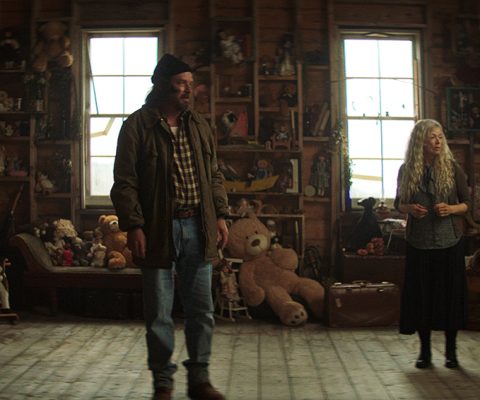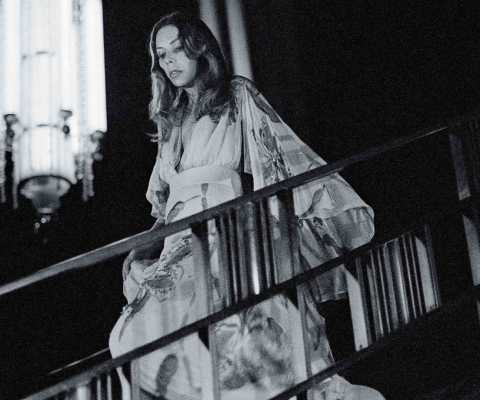Between the genre-redefining Night of the Living Dead in 1968 and the peak-career Dawn of the Dead a decade later, the late George A. Romero directed There’s Always Vanilla (1971), his only attempt at a romantic comedy, followed in quick succession by Season of the Witch and The Crazies in 1973, horror entries that received middling to poor critical and box-office responses at the time but have since been reevaluated. The relative failures of either film, however, stopped Romero from working, though Romero’s status as a Pittsburgh-based, indie horror writer-director, made financing a perpetual problem for Romero and his DIY approach to filmmaking outside the Hollywood studio system.
Before making his feature-length debut in 1968 with Night of the Living Dead, Romero honed his craft making educational-industrial films financed by and targeted to specific industries. That experience proved instrumental during the early ‘70s when Romero, between films and needing a reasonably steady income, returned to non-commercial filmmaking and accepted a not unusual offer from Lutheran Service Society of Western Pennsylvania to make an educational film about the myriad problems faced by a post-retirement, aging population. Soon after seeing the result, The Amusement Park, a decidedly idiosyncratic, ferocious takedown of American capitalism (Old Age Edition), the Lutheran Service Society decided against additional screenings.
Considered lost until a print was rediscovered in 2017 and subsequently restored by Romero’s non-profit foundation, The Amusement Park opens with a deceptively straightforward scene as the never identified walking and talking narrator played by a then 70-year-old Lincoln Maazel, gently chides the 1973 audience on the other side of the screen for deliberately ignoring the needs of an aging population. That same narrator returns to close out The Amusement Park’s wraparound segment, but when we next see Maazel, he’s nattily attired in a pristine white suit, white shirt, and white tie. Not so surprisingly, Maazel’s suit, like his belief in the fundamental goodness, compassion, and empathy of his fellow man or woman, will take a considerable beatdown in the intervening 45-50 minutes, both a reflection of Romero and his screenwriter Wally Cook’s take on Nixon-era America and a naked plea for viewers to step up and do better.
From there, The Amusement Park takes a turn for the surreal, introducing a second Maazel, this time dirty, disheveled, and bloodied, inside a white room as another Maazel, cleanly dressed and buoyantly optimistic, greets him. The discussion between past and present (or past and future) selves tips the audience that whatever follows next won’t be simple or straightforward as the dryly informational opening indicated. Instead, The Amusement Park takes Maazel’s character on a physical, emotional, and even spiritual journey through the unnamed park of the title, each stop in the park, from a rollercoaster to a mini-train ride and on through bumper cars and a brief visit to a fortune teller, meant to reflect an aspect of the day-to-day mistreatment or abuse faced by a post-retirement, aging population viewed primarily as a net drain to a society focused primarily on what citizen-workers can contribute and consume, not what they deserve.
The depredations, insults, and abuse faced by Maazel’s character, however, don’t end there. Every attempt at human contact ends in practically abject failure. When he tries to get help for himself or for someone else, he’s rebuffed or ignored at every turn. Later, a bizarre pageant for seniors erupts in frustration and anger, the formerly passive audience turns Maazel’s character into the target for that frustration and anger, leaving Maazel’s character closer to the dirty, disheveled, beaten down man we met in the second scene. Attempts to obtain medical aid end with Maazel’s character treated less as a human being requiring care than a buyer in a big-box store purchasing non-essentials, ultimately leaving Maazel’s character back in the white room awaiting his past self, hoping to break the time loop that always ends in disappointment and despair.
Narratively, The Amusement Park stands out as an exception to Romero’s general, more conventional approach to storytelling. As a social, political, and cultural critique, however, The Amusement Park slides comfortably into Romero’s views of filmmaking less as a commercial product (an idea he resisted throughout a career spanning five decades) and more as individual artistic expression. For Romero, artistic expression didn’t mean avoiding social issues or political problems, but tackling them head-on, albeit usually in metaphorical form through a genre, horror, all too often perceived as disposable entertainment interested only in visceral shocks and scares and not thematic concerns or meaning. From the original Living Dead trilogy and everything in between, including now The Amusement Park, Romero proved those detractors wrong again and again.
The Amusement Park is available to stream via Shudder.






Comments